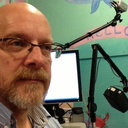Autoantibody biomarkers in childhood-acquired demyelinating syndromes: results from a national surveillance cohort.
Słowa kluczowe
Abstrakcyjny
BACKGROUND
Autoantibodies to glial, myelin and neuronal antigens have been reported in a range of central demyelination syndromes and autoimmune encephalopathies in children, but there has not been a systematic evaluation across the range of central nervous system (CNS) autoantibodies in childhood-acquired demyelinating syndromes (ADS).
METHODS
Children under the age of 16 years with first-episode ADS were identified from a national prospective surveillance study; serum from 65 patients had been sent for a variety of diagnostic tests. Antibodies to astrocyte, myelin and neuronal antigens were tested or retested in all samples.
RESULTS
Fifteen patients (23%) were positive for at least one antibody (Ab): AQ4-Ab was detected in three; two presenting with neuromyelitis optica (NMO) and one with isolated optic neuritis (ON). Myelin oligodendrocyte glycoprotein (MOG)-Ab was detected in seven; two with acute disseminated encephalomyelitis (ADEM), two with ON, one with transverse myelitis (TM) and two with clinically isolated syndrome (CIS). N-Methyl-D-Aspartate receptor (NMDAR)-Ab was found in two; one presenting with ADEM and one with ON. Voltage-gated potassium channel (VGKC)-complex antibodies were positive in three; one presenting with ADEM, one with ON and one with CIS. GlyR-Ab was detected in one patient with TM. All patients were negative for the VGKC-complex-associated proteins LGI1, CASPR2 and contactin-2.
CONCLUSIONS
A range of CNS-directed autoantibodies were found in association with childhood ADS. Although these antibodies are clinically relevant when associated with the specific neurological syndromes that have been described, further studies are required to evaluate their roles and clinical relevance in demyelinating diseases.


